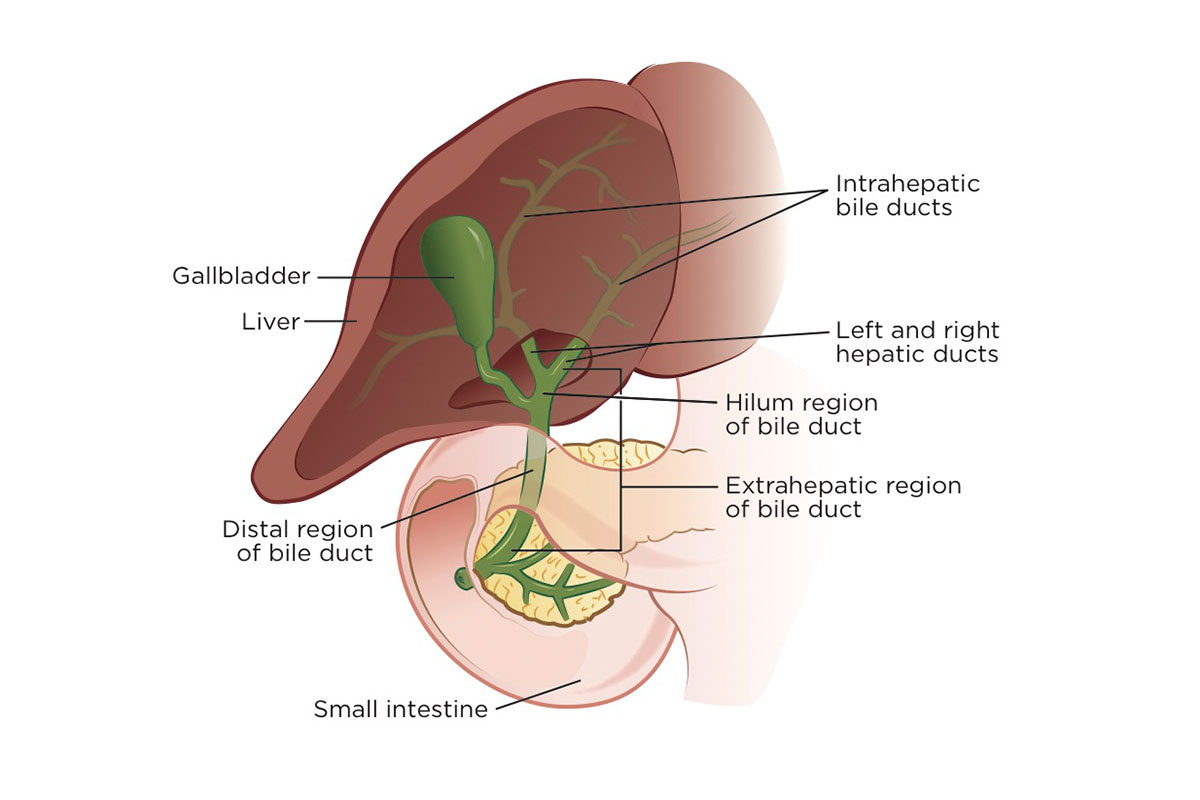
Most bile duct cancers develop outside the liver. This is called extrahepatic bile duct cancer. About two-thirds of extrahepatic tumors develop in the hilum region, where the left and right hepatic ducts exit the liver and join.
Bile duct cancer is also called cholangiocarcinoma. Most bile duct cancer is adenocarcinoma. This growth begins in the mucus glands that line the insides of the bile ducts.
Bile duct tumors can occur in the main bile ducts outside the liver (extrahepatic) or within the liver (intrahepatic).
Extrahepatic Bile Duct Cancer
Most bile duct cancers — about 90 percent — develop in a bile duct outside the liver (extrahepatic). They can form in two regions:
Hilar Bile Duct Cancer
Hilar bile duct cancer is also called a Klatskin tumor or perihilar cholangiocarcinoma. It is found just outside the liver where the two main bile ducts meet as they leave the liver. About two-thirds of extrahepatic tumors are hilar bile duct cancer.
Distal Bile Duct Cancer
These tumors are found in the bile duct nearest the small intestine.
Intrahepatic Bile Duct Cancer
About 10 percent of bile duct cancer develops in the small duct branches within the liver. Intrahepatic bile duct tumors are often confused with primary liver cancer (hepatocellular carcinoma), a type of cancer that begins in the liver. (Learn more about primary liver cancer.)
Request an Appointment
Available Monday through Friday, to (Eastern time)